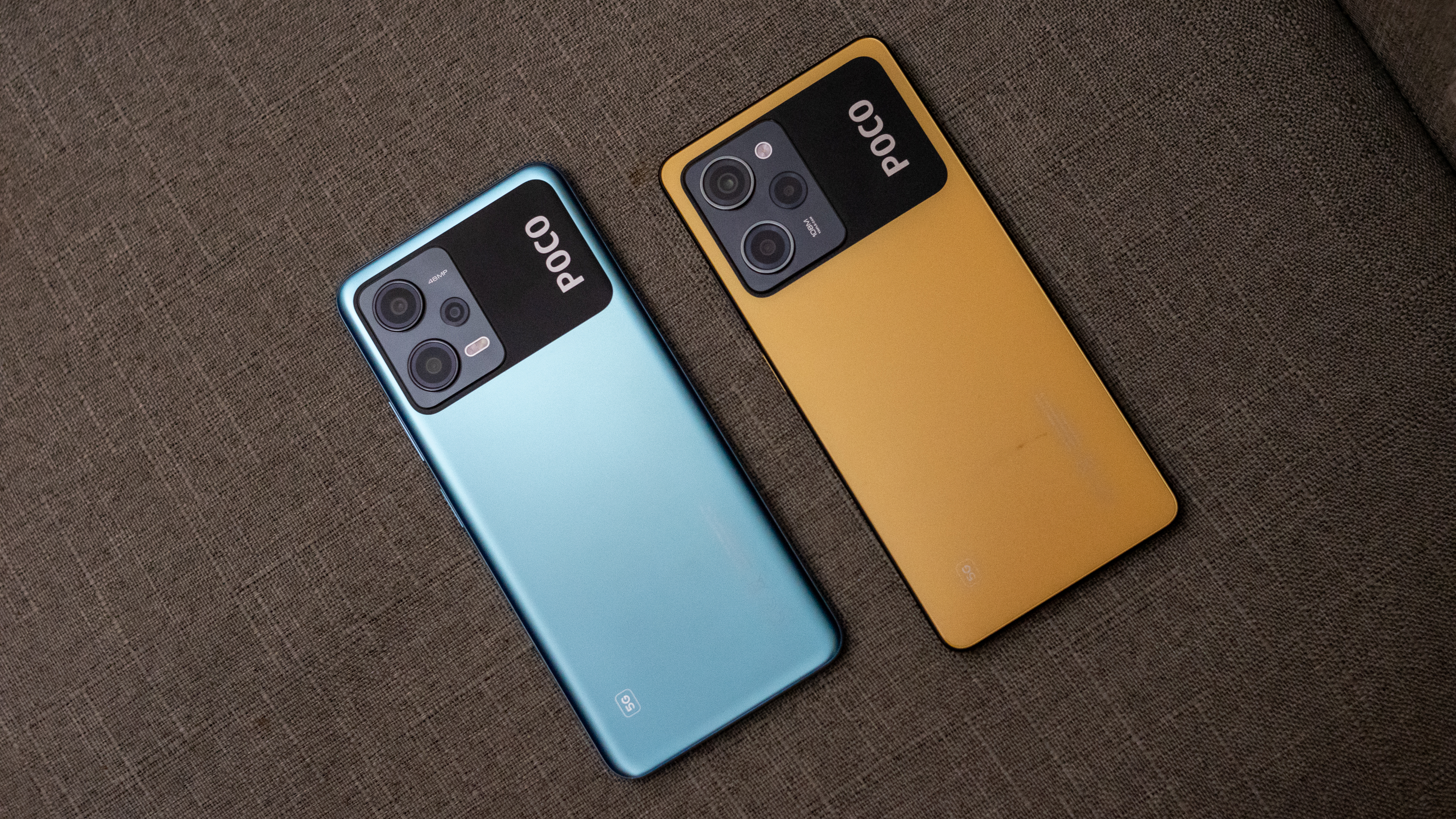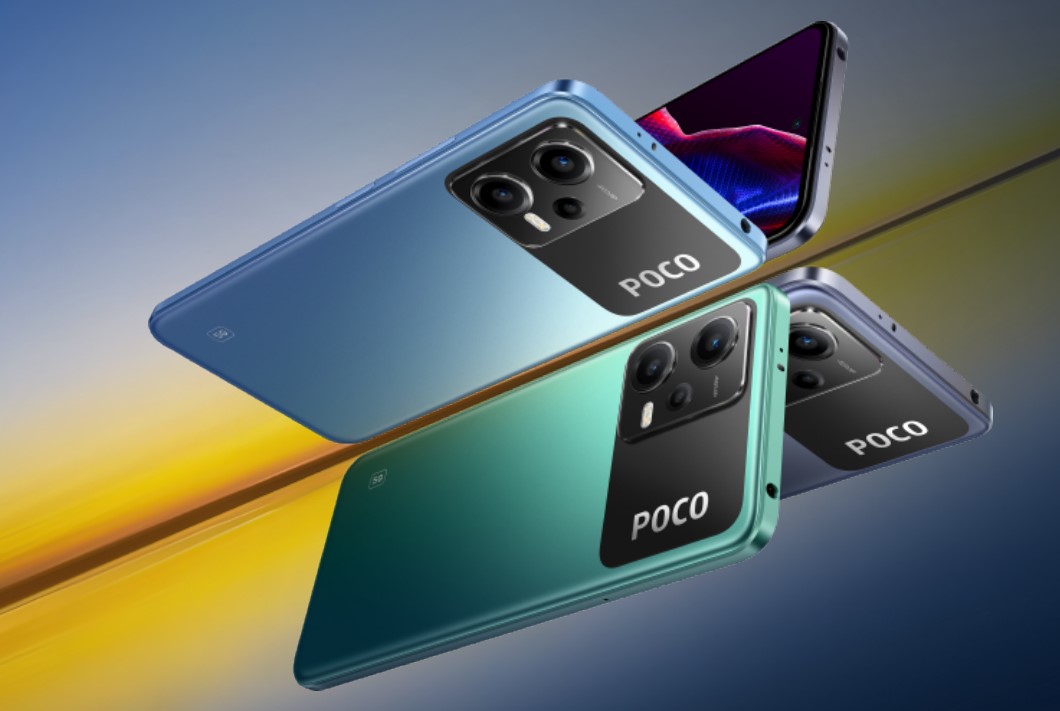The Poco X5 Pro comes for the best cheap Android phones with near-flagship specs
Both the Pro and regular models in the Poco X5 series boast a super smooth screen and impressive camera specs.

Update (February 6, 10:16 am ET): Poco has shared the pricing details for each model.
What you need to know
- Poco has announced the X5 series, its latest mid-range smartphones.
- The Poco X5 Pro sits at the top with a Snapdragon 778G chipset, a 108MP camera, and a 120Hz screen refresh rate.
- Meanwhile, the standard version is powered by a Snapdragon 695 SoC and shares the same screen refresh rate with its more expensive sibling.
Today, Poco debuted the X5 and X5 Pro, both of which boast decent specs for prices you’d expect to pay for budget smartphones, including Qualcomm's mid-range Snapdragon processors, fairly large batteries, and a super-smooth screen refresh rate.
Poco touts the flagship-level experience provided by the X5 Pro 5G, but no pricing information is provided in the press materials. The prices will presumably vary depending on the storage level you choose, with the cheaper model packing 6GB of RAM and 128GB of internal storage, while the more expensive model provides 8GB of RAM and 256GB of storage. The standard X5 model has the same memory and storage configurations.
Both models also have a similar 6.67-inch AMOLED display with a 2400 x 1080 resolution and a screen refresh rate of up to 120Hz. However, the screen on the Pro model is protected by Corning's Gorilla Glass 5, whereas the standard variant is protected by Gorilla Glass 3.
What's more impressive about the Pro variant is its 108MP main camera, which isn't typically found on many of the best budget Android phones. This type of camera has previously been seen on Samsung's Galaxy S21 Ultra and S22 Ultra, as well as low-cost Chinese models such as the Xiaomi 11T Pro and Realme 10 Pro Plus 5G.

Meanwhile, the standard model has a 48MP main camera on the back. The rest of the back lenses, such as an 8MP ultra-wide shooter and a 2MP macro sensor, are the same for both models. The Pro model has a 16MP selfie camera on the front, while the X5 only has a 13MP camera.
In terms of processing power, the X5 Pro comes with an eight-core 6nm-based Snapdragon 778G chipset, which was recently succeeded by Qualcomm's new Snapdragon 782G processor. On the other hand, the regular version is powered by a Snapdragon 695 SoC. Both variants pack a 5,000mAh battery, which supports 67W fast charging for the Pro model and 33W for the regular variant.
Be an expert in 5 minutes
Get the latest news from Android Central, your trusted companion in the world of Android
Poco claims the Pro model's battery can be charged up to 30% in just 7 minutes, while the vanilla X5 can be fully juiced up in about 68 minutes.

The Poco X5 is a tad bigger than its Pro sibling, measuring 165.88 x 76.21 x 7.98mm (the X5 Pro measures 162.91 x 76.03 x 7.9mm). It's also heavier than the X5 Pro, coming in at 189g versus 181g.
Both devices also share a few common specs, including a 3.5mm headphone jack, NFC, and IR blaster. However, there are some notable differences between the two models, most notably the MIUI version. The regular model runs MIUI 13, whereas the Pro model ships with MIUI 14, both of which are based on Android 12. This is perhaps the biggest drawback of a phone released in 2023, when most smartphone models come with Android 13 out of the box.
Unlike the regular X5, the X5 Pro has dual speakers, though it's unclear whether these are powered by Dolby Atmos, as seen on the Poco X4 GT.
Poco didn't specify when they'll hit store shelves. When they do, the X5 will come in green, blue, and black color options, while the X5 Pro will be available in black, blue, and yellow.
Update
The Poco X5 Pro starts at €299 for the 6GB/128GB variant, while the 8GB/256GB configuration costs €349. Meanwhile, the standard model's base price is €249, or you can spend €299 for a bigger storage capacity.
Both versions will be available to purchase on February 7 via Poco's retail partners.

Jay Bonggolto always keeps a nose for news. He has been writing about consumer tech and apps for as long as he can remember, and he has used a variety of Android phones since falling in love with Jelly Bean. Send him a direct message via Twitter or LinkedIn.
